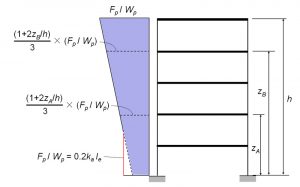
Wall Anchorage: All Diaphragms Not Flexible or Not All Diaphragms Flexible?
Many statements can be interpreted in more than one way, and nowhere is this truer than in the case of many of our building code provisions.
Many statements can be interpreted in more than one way, and nowhere is this truer than in the case of many of our building code provisions. One can think there is only one way to interpret a provision well until someone else reads it differently. The correspondence below is a prime example of that.
Q. I wonder if you can comment on ASCE 7-10 Section 12.11.2.1. The second paragraph from the bottom of this section reads:
ASCE 7-10
12.11.2 Anchorage of Structural Walls and Transfer of Design Forces into Diaphragms
12.11.2.1 Wall Anchorage Forces.
[The first part of the section is not reproduced for brevity]
Where the anchorage is not located at the roof and all diaphragms are not flexible (emphasis added), the value from Eq. 12.11-1 is permitted to be multiplied by the factor (1 + 2z/h)/3, where z is the height of the anchor above the base of the structure and h is the height of the roof above the base.
[The last paragraph of the section is not reproduced for brevity]
The requirement “all diaphragms are not flexible” can have two interpretations:
- Not ALL diaphragms are flexible, although one or more may be flexible.
- All diaphragms have to be “not flexible”. In other words, all diaphragms must be either rigid or semi-rigid.
Which interpretation is correct?
A. The second interpretation is correct. Where ALL diaphragms are NOT flexible (per Section 12.3.1), the force coefficient (Fp/Wp) calculated at the roof can be pro-rated by height to connect diaphragms below the roof (subject to a lower-bound of 0.2kaIe). If all or some (even one) of the diaphragms are flexible, the acceleration determined at the roof level applies at all levels.
Having a mix of flexible and rigid or semi-rigid diaphragms would greatly increase the complexity and variability of wall anchorage forces; so a reduction would not be appropriate with mixed diaphragm types.